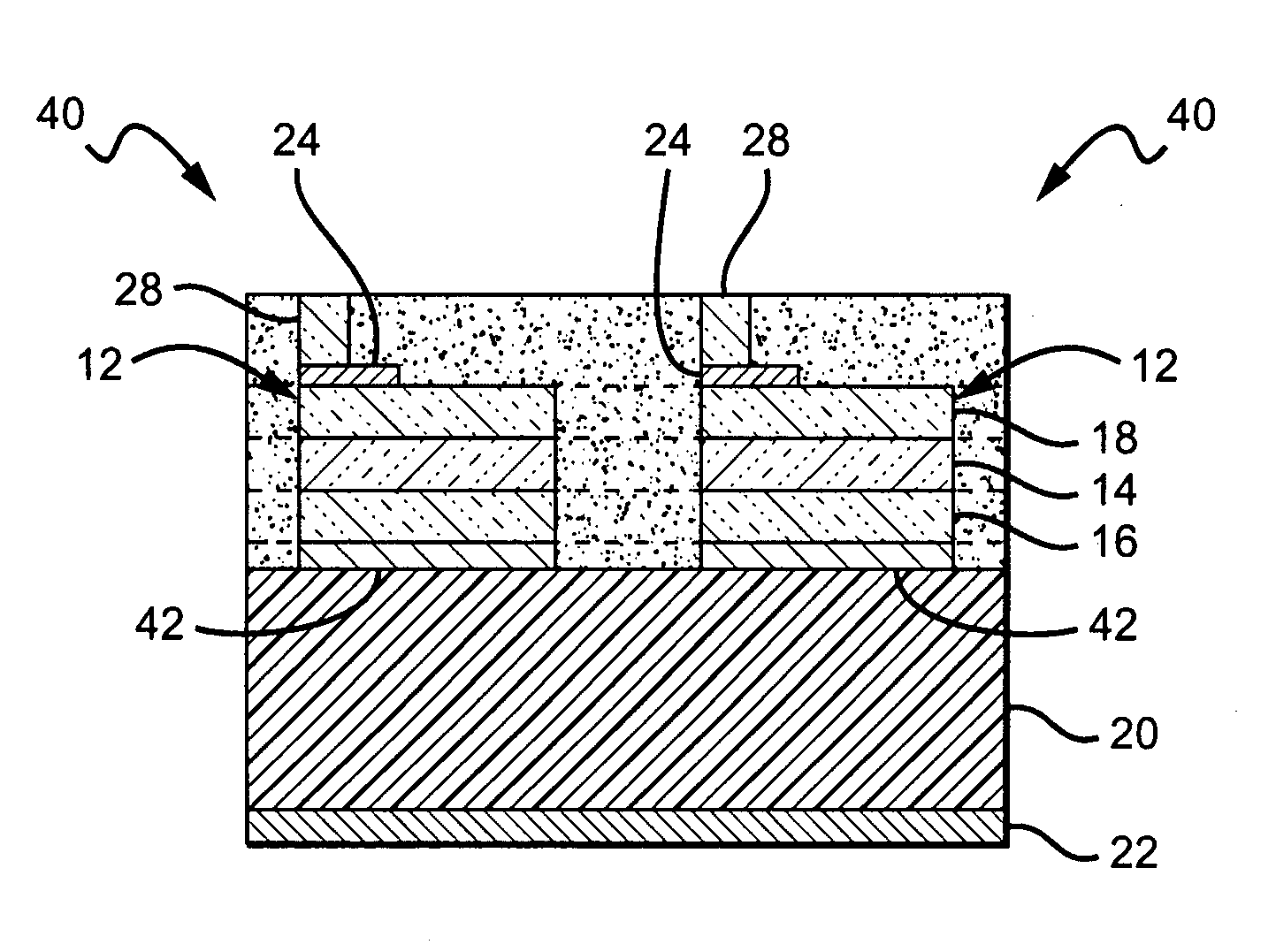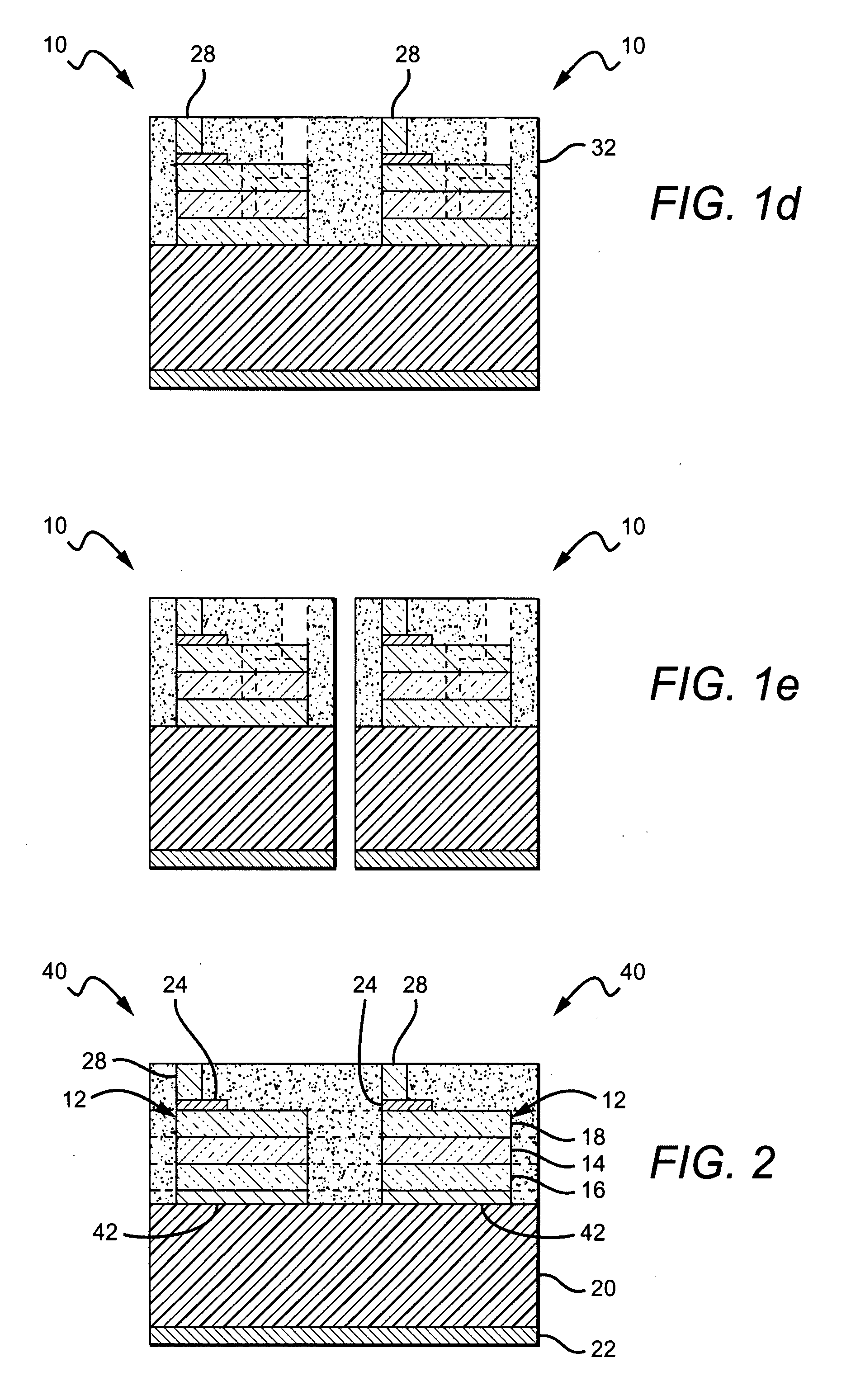Wafer level phosphor coating method and devices fabricated utilizing method
a phosphor coating and wafer level technology, applied in semiconductor devices, semiconductor/solid-state device details, electrical devices, etc., can solve the problems of difficult to consistently reproduce leds with the same or similar emission characteristics, difficult to control the geometry and thickness of the phosphor layer, and non-uniform color temperatur
- Summary
- Abstract
- Description
- Claims
- Application Information
AI Technical Summary
Problems solved by technology
Method used
Image
Examples
Embodiment Construction
[0032]The present invention provides fabrication methods that are particularly applicable to wafer level coating of semiconductor devices such as LEDs. The present invention also provides semiconductor devices, such as LEDs fabricated using these methods. The present invention allows coating of LEDs at the wafer level with a down-converter layer (e.g. phosphor loaded silicone) while still allowing access to one or more of the contacts for wire bonding. According to one aspect of the present invention, electrically conducting pedestals / posts are formed on one or both of the LED contacts (bond pads) while the LEDs are at the wafer level. These pedestals can be fabricated using known techniques such as electroplating, electroless plating, stud bumping, or vacuum deposition. The wafer can then be blanket coated with a down-converter coating layer, burying the LEDs, contacts and pedestals. Each of the pedestals act as a vertical extension of its contact, and although the blanket coating ...
PUM
| Property | Measurement | Unit |
|---|---|---|
| temperature | aaaaa | aaaaa |
| thickness | aaaaa | aaaaa |
| thickness | aaaaa | aaaaa |
Abstract
Description
Claims
Application Information
 Login to View More
Login to View More - R&D
- Intellectual Property
- Life Sciences
- Materials
- Tech Scout
- Unparalleled Data Quality
- Higher Quality Content
- 60% Fewer Hallucinations
Browse by: Latest US Patents, China's latest patents, Technical Efficacy Thesaurus, Application Domain, Technology Topic, Popular Technical Reports.
© 2025 PatSnap. All rights reserved.Legal|Privacy policy|Modern Slavery Act Transparency Statement|Sitemap|About US| Contact US: help@patsnap.com



